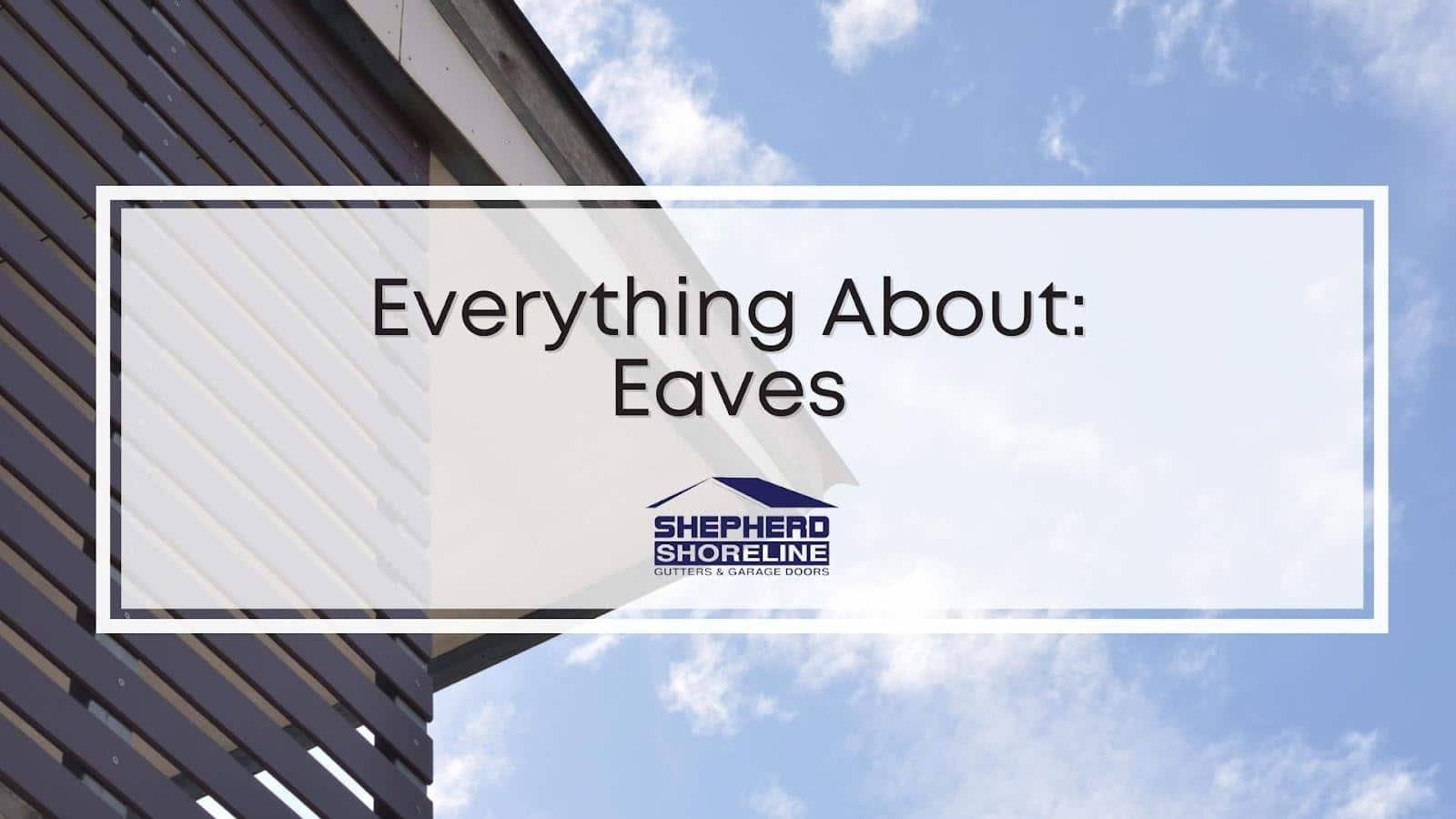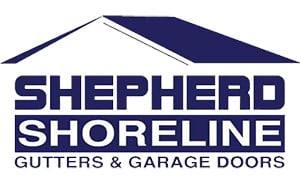
If you’ve searched for “Muskegon eaves repair” on the internet, you might have encountered other terms within your search results, like gutter, soffit, and fascia. Why are these included? This is often because many gutter repair service providers will group these as the same kind of repair, despite technical differences. Shepherd Shoreline is here to clear the confusion!
We’ll discuss eaves and elaborate on the differences between eaves and gutters. Furthermore, we’ll also talk about how it all relates to the well-known term eavesdropping.
Table of Contents
- What Are the Eaves of a House?
- How the Word Eavesdropper Relates
- The Difference Between Eaves and Gutters
- Professional Eaves Repair Muskegon
What Are the Eaves of a House?
An eave is a section of a roof that overhangs or extends beyond the side of a building. Eaves provide both protection and aesthetics to your home. Typically, an eave contains a soffit and a fascia.
Fascia
A fascia is a board attached to the roof’s lower edge. It encloses the ends of your home’s roof rafters. Additionally, fascias protect the roof from weather elements, such as snow and rain. A fascia also provides support for installing gutters and drainpipes in your home.
Soffit
A soffit is a board that extends from beneath the fascia to the outer wall of your home. It closes the gap underneath the eave. In some homes, soffits have ventilators to enable airflow into the roof area.
Eaves enhance the overall appearance of your property. You can pick from a range of eave designs to complement your home’s style, whether contemporary or conventional. In addition to their aesthetic contribution, eaves safeguard your home from potential weather-related damage. They can help keep snow and rain away from your home’s siding and foundation, and during the summer months, a well-positioned eave can supply exterior windows a bit of shade.
As a bonus, having eaves on your house can provide areas for installing lights and cameras, improving the security of your home.
Types of Eaves
When you decide to incorporate an eave into the design of your home, it’s advised to select the sort of eave that best suits your needs along with your preferences. There are three different types of eaves to choose from:
Open Eaves
An open eave lacks a soffit, which exposes the roof’s underside, including the rafters.
Closed Eaves
A closed eave features a soffit that connects the bottom end of the fascia to your home’s outer wall at a 90-degree angle, closing the space beneath the eave.
Boxed-in Eaves
A boxed-in eave utilizes a soffit that connects to the outer siding of your home, enclosing the underside of the eave at the same angle as the roof.
Out of the three above, most eaves repair experts will urge homeowners to avoid open eaves as they will be prone to animal infestation.
How the Word Eavesdropper Relates
Did you know that eavesdropping originally meant something other than listening in on private conversations? Eavesdrop is derived from the word eave, which refers to a roof extension that provides protection and improves aesthetics.
The term eavesdrop was initially known as the water pouring from the eaves of a home. Later, it was defined as the area on the ground where the rainwater fell from the home’s eaves, typically the watermarks on the floor.
Many believed that if you stayed near the “eavesdrop,” you could hear the people’s conversations within the house. A person who intentionally or frequently does this to listen to household conversations is now known as an eavesdropper. Eavesdropping eventually came to denote the act of secretly listening to private conversations.
The Difference Between Eaves and Gutters
An eave prevents rainwater from entering your roof. The flow of rainwater down from the roof, on the other hand, might create splashing and water damage to your home’s siding. Furthermore, excessive rain can cause puddles or even flooding in your basement. As a result, gutters must be installed in residences located in rainy areas.
A gutter collects rainwater from the roof and redirects it towards a rain collection reservoir, such as a rain barrel. Gutters help to reduce the risk of water damage from heavy rain.
Pros and Cons of Gutters
While gutters benefit your home, they also have drawbacks that you should consider before installing one. Here are some advantages and disadvantages of gutters:
Pros
Prevents Soil Erosion
Rainwater that falls directly to the ground might create soil erosion around your property. Soil erosion can ruin your sloping landscape, forcing water to flow towards your home rather than away from it. A gutter prevents this by directing the rainwater from the roof towards a drain or a water reservoir.
Protects Home’s Exterior
Flowing rainwater from the roof can result in the water splashing towards the exterior walls of your home. Splashed water can harm your home’s siding, especially if it’s made of wooden materials. Gutters divert rainfall away from your house’s siding, saving it from water damage.
Prevents Flooding
Water can accumulate around your home due to rainwater directly flowing from your roof to the ground. Any leaks and gaps in the walls will enable the water to enter your home, create puddles, or flood your basement. A gutter channels rainwater away from your home’s foundation, preventing water buildup.
Cons
Cost
Not all homes need to install gutters. To prevent incurring additional costs for gutter installation, you must first determine whether your home requires one. For instance, if your home has a higher elevation than the surrounding landscape, the water tends to flow away from your home. It is unlikely for your home ground to accumulate rainwater. You can opt not to have a gutter and save money from gutter installation expenses.
Clogs
Gutter clogging is one of the primary and most frequent problems with home gutters. Home gutters, especially in areas near trees, tend to accumulate leaves that can cause clogs. Gutter cleaning is required regularly to avoid obstructions and ensure optimal gutter function. On the other hand, you can prevent gutter clog problems by using gutter covers.
Here at Shepherd Shoreline of Muskegon, we offer gutter cover solutions that keep leaves away from your Muskegon gutters. With Leafproof as one of our trusted manufacturers, we can guarantee that the gutter covers we provide for your homes are of high quality.
Professional Eaves Repair Muskegon
Michigan is one of the states that gets a lot of rain. Having eaves and gutters is necessary for homes within such a rainy state to reduce rainwater damage. However, your home may be subject to further water damage if gutters and eaves are not installed properly, costing you more money in repairs.
We are a proud team of professionals here at Shepherd Shoreline, providing installation and repair services in Muskegon and surrounding areas. We also offer gutter cover installations with the finest gutter covers manufactured by Leafproof. Feel free to contact us at (231) 780-2847 or leave a message here.

